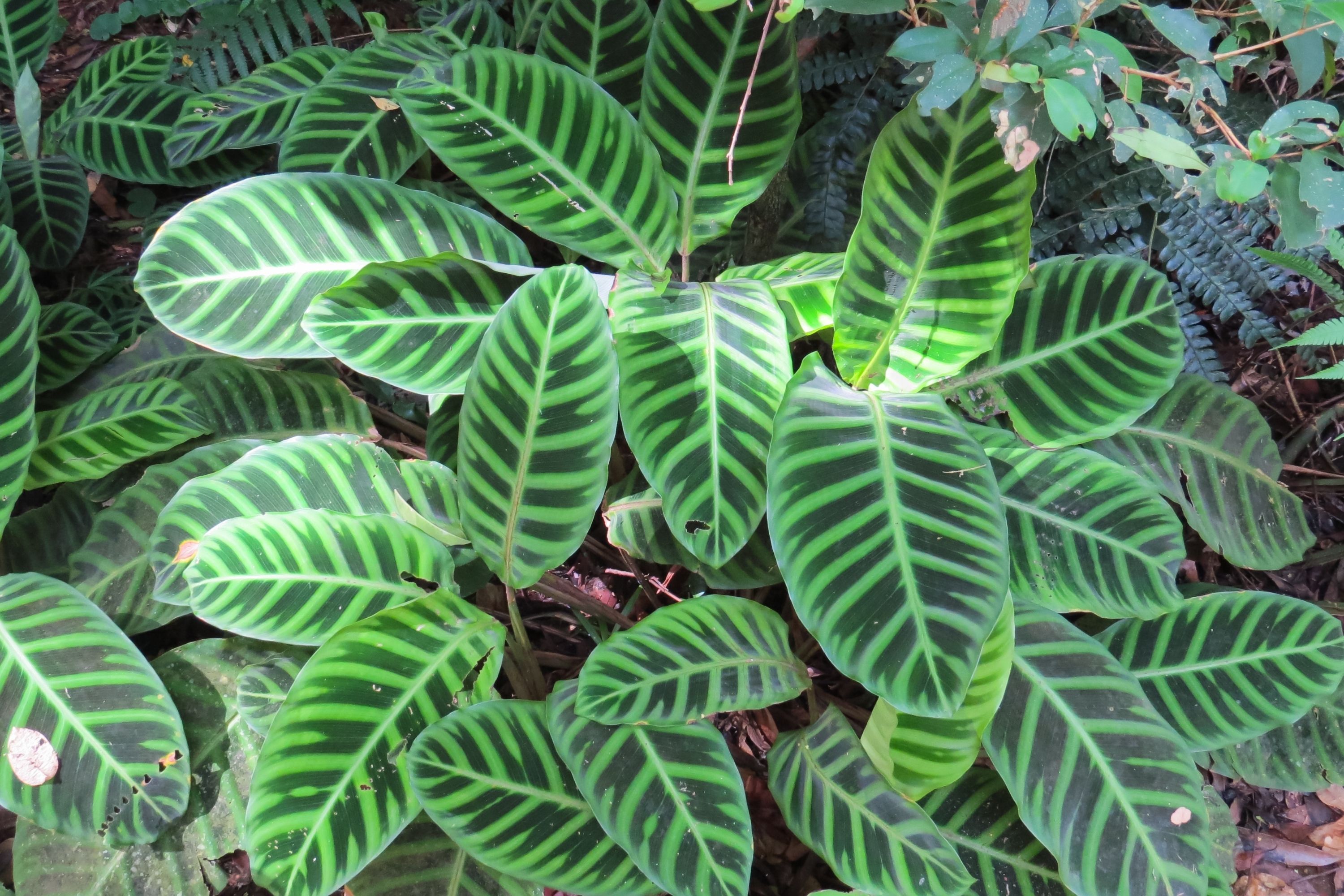Zebra plant
(Calathea zebrina)

Description
Calathea zebrina, also known as the zebra plant, is a popular tropical houseplant known for its striking striped leaves. This plant belongs to the Marantaceae family and is native to Brazil, specifically the rainforests of the state of Minas Gerais. In this article, we will provide a comprehensive overview of the Calathea zebrina, including its appearance, care requirements, propagation, and common problems. Appearance: The Calathea zebrina is a medium-sized plant that can reach up to 3 feet (90 cm) in height. Its leaves are large and oblong-shaped, measuring around 12 inches (30 cm) long and 5 inches (13 cm) wide. The leaves are dark green with white or light green stripes that resemble the stripes of a zebra, hence its common name. The undersides of the leaves are purple or burgundy, adding to the plant's visual appeal. The plant produces small, inconspicuous flowers that are not a significant feature. Care Requirements: The Calathea zebrina is a relatively low-maintenance plant, but it does require some specific care to thrive. Here are some essential care requirements for this plant: Light: The Calathea zebrina prefers bright but indirect light. Direct sunlight can scorch the leaves, while too little light can cause the plant to become leggy and lose its stripes. Water: This plant prefers consistently moist soil but can be sensitive to overwatering. It is best to water it when the top inch of soil feels dry, but do not allow the plant to sit in standing water. Humidity: The Calathea zebrina is a tropical plant that thrives in high humidity. It is best to keep it in a room with a humidity level of around 50-60%. If the air is too dry, the plant may develop brown tips or edges on its leaves. Temperature: The Calathea zebrina prefers warm temperatures between 65-80°F (18-27°C) and is sensitive to cold drafts. Soil: This plant prefers well-draining soil that is rich in organic matter. Fertilizer: Feed the plant with a balanced fertilizer every two weeks during the growing season (spring and summer) and reduce or stop feeding in the winter. Propagation: The Calathea zebrina can be propagated through division or stem cuttings. Division: When the plant has outgrown its pot, gently remove it from the soil and divide the plant into smaller sections. Each section should have at least one stem and several leaves. Replant the sections into their own pots with fresh soil and water thoroughly. Stem Cuttings: Take a stem cutting from the plant, making sure it has at least two nodes. Dip the cut end into rooting hormone and plant it in a pot filled with moist soil. Cover the pot with a plastic bag to create a humid environment and keep the soil moist. After a few weeks, the cutting should develop roots and can be treated like a mature plant. Common Problems: The Calathea zebrina is a relatively hardy plant, but it can be prone to a few common issues. Here are some of the most common problems and their solutions: Brown edges or tips: This is usually a sign of dry air or underwatering. Increase the humidity levels or water the plant more frequently. Yellowing leaves: This can be a sign of overwatering, root rot, or nutrient deficiencies. Check the soil moisture levels and adjust watering accordingly. If the plant is still yellowing, consider repotting it in fresh soil and feeding it with a balanced fertilizer. Spider mites: These tiny pests can cause yellowing leaves and webbing on the plant.
Taxonomic tree:







